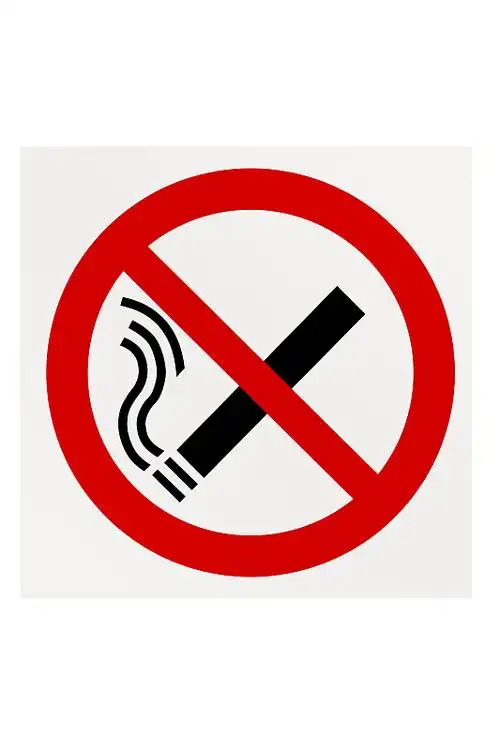The Ultimate Guide to Measuring Your Vape Coil's Resistance Accurately and Safely
So, you’ve got your vape, some e-liquid, and you’re ready to enjoy a smooth, flavorful cloud. But have you ever stopped to think about the tiny, intricate heart of your device—the coil? Understanding and checking your vape coil resistance isn't just for veteran cloud-chasers or tech-savvy hobbyists; it's a fundamental skill that enhances your safety, improves your vaping experience, and saves you money in the long run. If terms like "ohms," "resistance," and "multimeter" sound intimidating, don't worry. This friendly guide will walk you through everything you need to know, from the absolute basics to the pro-level tips.
Let's start with the most crucial question: Why does coil resistance even matter?
Why Your Vape Coil's Ohm Reading is a Big Deal
In simple terms, the resistance of a coil, measured in ohms (Ω), determines how much electrical current from your battery can flow through it. Think of it like a water pipe. A low-resistance coil is a wide pipe, allowing a lot of water (current) to flow through quickly, producing massive amounts of steam (vapor). A high-resistance coil is a narrower pipe, restricting the flow and producing a smaller, gentler stream.
Here’s why checking this is non-negotiable:
- Safety First: Preventing Battery Strain: This is the most critical reason. Using a coil with a resistance that is too low for your battery can cause it to overwork, overheat, and potentially become dangerous. Modern regulated mods have protection circuits, but knowing your coil's resistance is your first line of defense in safe vaping practices.
- Flavor and Vapor Production: The resistance directly influences your vape's personality. Lower resistance coils (sub-ohm, below 1.0Ω) generally produce larger, denser vapor clouds and work best with high-VG liquids. Higher resistance coils (above 1.0Ω) offer a tighter draw, more intense flavor, and are perfect for mouth-to-lung vaping, similar to a traditional cigarette.
- Battery Life Optimization: A higher resistance coil consumes less power, meaning your battery will last longer. If you're constantly frustrated by a dead battery, your coil's resistance might be part of the problem.
- Troubleshooting Performance Issues: Is your vape tasting burnt? Is the vapor production weak? The first step in diagnosing common vape problems is to check the coil resistance. A fluctuating reading can indicate a faulty coil or a poor connection somewhere in your device.
Now that you understand the "why," let's get into the "how." We'll explore the different tools you can use.
Your Arsenal for Checking Coil Resistance: From Mods to Multimeters
There are three primary ways to check your coil's resistance, each with its own pros and cons.
Method 1: Using Your Regulated Vape Mod (The Easiest Way)
For 99% of vapers, this is the go-to method. Almost all modern box mods have a built-in ohm meter.
-
Step-by-Step Guide:
- Ensure your mod is off. Safety is key.
- Install your coil securely into your tank or rebuildable atomizer.
- Fill your tank with e-liquid and let it sit for a few minutes to prime the coil. This saturates the cotton, preventing immediate burning and ensuring an accurate reading.
- Screw the tank firmly onto your mod.
- Turn the mod on. The screen will typically display the resistance reading right away. It might be shown as "0.45Ω" or "1.2Ω," for example.
-
Pros: Incredibly convenient, no extra equipment needed, and it's perfectly accurate for general vaping purposes.
-
Cons: The accuracy can vary slightly between different mods. It's not suitable for checking coils before you install them.
What to Look For and Understanding Ohm Reader Fluctuations
When you see that number on your mod's screen, it's important to know what it's telling you.
- Stable Reading: If the number stays consistent, your coil is installed correctly and is functioning properly.
- "No Atomizer" or "Check Atomizer" Message: This usually indicates a connection problem. Ensure your tank is screwed on tightly, the coil is properly seated in the tank, and the 510 connector on your mod and tank are clean.
- Fluctuating Resistance: If the ohm reading jumps around (e.g., from 0.5Ω to 0.8Ω and back), it signals a problem. This could be due to:
- A loose post screw in an RBA (Rebuildable Atomizer).
- A stray piece of wire clipping causing a short circuit.
- A faulty pre-made coil.
- A dirty connection.
A fluctuating reading is a red flag. Do not fire the device until you've identified and fixed the issue.
Method 2: Using a Dedicated 510 Thread Ohm Reader
This is the gold standard for anyone who builds their own coils. A 510 ohm reader is a small, inexpensive device designed specifically for this purpose.
-
Step-by-Step Guide:
- Screw your atomizer (just the RBA or tank, without the mod) directly onto the ohm reader's 510 connection.
- Turn the ohm reader on. It will display the resistance.
- For rebuildables, you can check your coil before wicking it. This allows you to dry-burn the coil (pulsing it at low power to remove hotspots) and get a perfect reading without any risk to your main mod.
-
Pros: Highly accurate, much safer for testing and dry-burning new coils, protects your main mod from potential damage.
-
Cons: It's an extra piece of equipment to buy and carry.
Method 3: Using a Digital Multimeter (The Advanced Method)
A digital multimeter (DMM) is a versatile tool for all things electrical, but it requires a bit more know-how.

-
Step-by-Step Guide:
- Set your multimeter to the resistance (Ω) setting, usually the lowest range (200Ω).
- Touch the metal probes together. The display should show a reading very close to 0.0Ω. This is the resistance of the probes themselves; note this number.
- To measure the coil:
- For an installed coil: Carefully touch one probe to the center pin of the atomizer's 510 connection and the other to the external threading. Be careful not to cause a short.
- For a loose coil: Touch one probe to each of the coil's legs.
- The true resistance of your coil is the reading on the multimeter minus the probe resistance you noted earlier.
-
Pros: Extremely precise, a tool that has many other uses.
-
Cons: Can be fiddly and less convenient, risk of inaccurate readings if not used properly, not recommended for beginners.
Interpreting Your Results and Matching Resistance to Your Vaping Style
You've got a number. Now what? Let's put it into context.
- Sub-Ohm Vaping (Below 1.0Ω): If your reading is between 0.1Ω and 0.9Ω, you're in sub-ohm territory. This style requires more power (wattage), produces large clouds, and uses e-liquid quickly. It's ideal for Direct-to-Lung (DTL) vaping. Ensure your battery and mod can handle the required power output.
- Standard Resistance Vaping (1.0Ω and Above): Readings from 1.0Ω to 2.5Ω+ are standard for Mouth-to-Lung (MTL) vaping. They work well at lower wattages, conserve battery and e-liquid, and provide a tighter, more flavorful draw.
Proactive Coil Maintenance and Resistance Checking
Making resistance checks a habit will transform your vaping.
- When to Check: Check the resistance of a new coil as soon as you install it. Also, check it periodically as the coil ages. A gradual change might be normal, but a sudden jump often means the coil is at the end of its life.
- The Connection Between Resistance and Coil Longevity: As a coil is used, gunk from sweetened e-liquids builds up on the wire. This can slightly alter the resistance. A significant increase often correlates with a burnt taste and diminished performance, signaling it's time for a coil change.
Troubleshooting Common Vape Coil Problems Through Resistance
Let's solve some real-world issues.
- Problem: Burnt Taste.
- Check: The resistance. If it's significantly higher than the coil's rating, the coil is likely gunked up and needs replacing. If it's normal, you may not have primed it correctly.
- Problem: Weak Vapor Production.
- Check: The resistance. If it's reading higher than expected, the coil isn't heating effectively. If it's reading lower, your mod might not be supplying enough power for that specific coil.
- Problem: Device Getting Hot.
- Check: The resistance. A very low resistance coil can cause the entire device to heat up due to the high power draw. Ensure you are using a coil within your mod's recommended range.
By taking just a few moments to check your vape coil resistance, you empower yourself with knowledge. You vape more safely, you get a consistently better experience, and you become an informed user who can troubleshoot issues on the fly. So, grab your mod, take a look at that screen, and know that you're in complete control of your vape. Happy vaping









